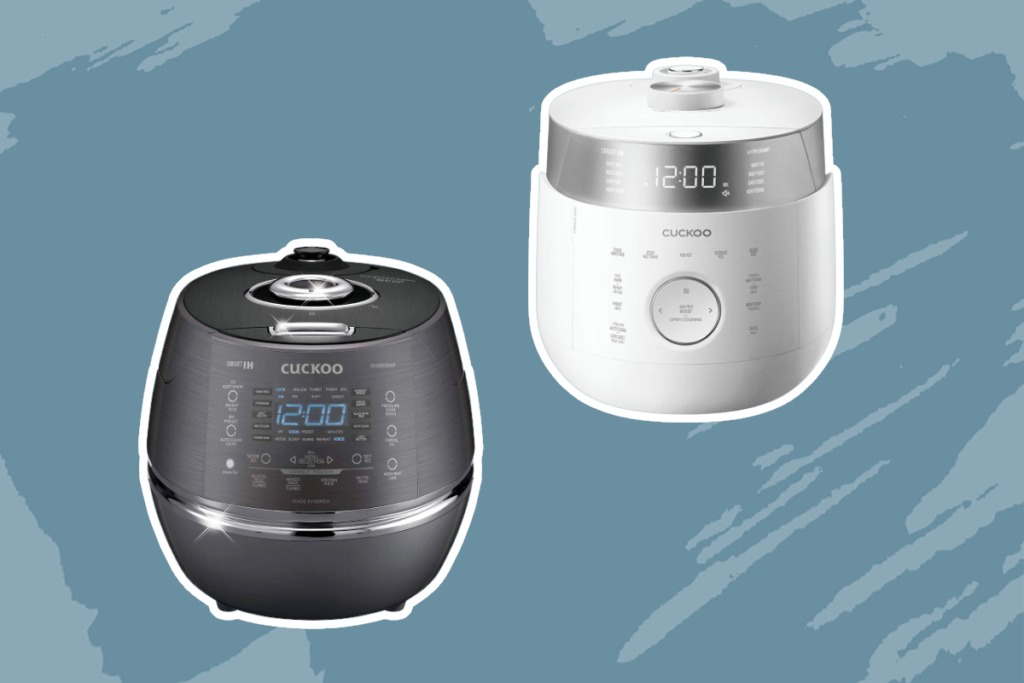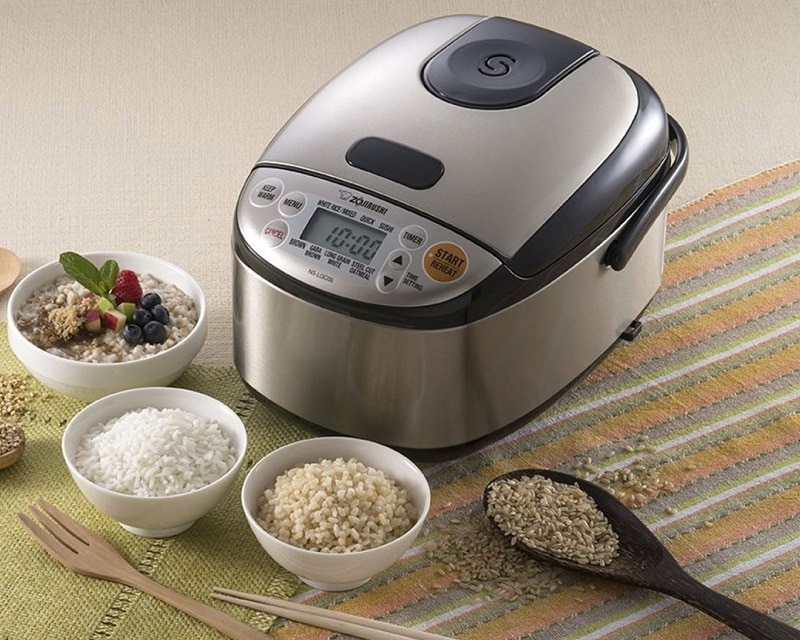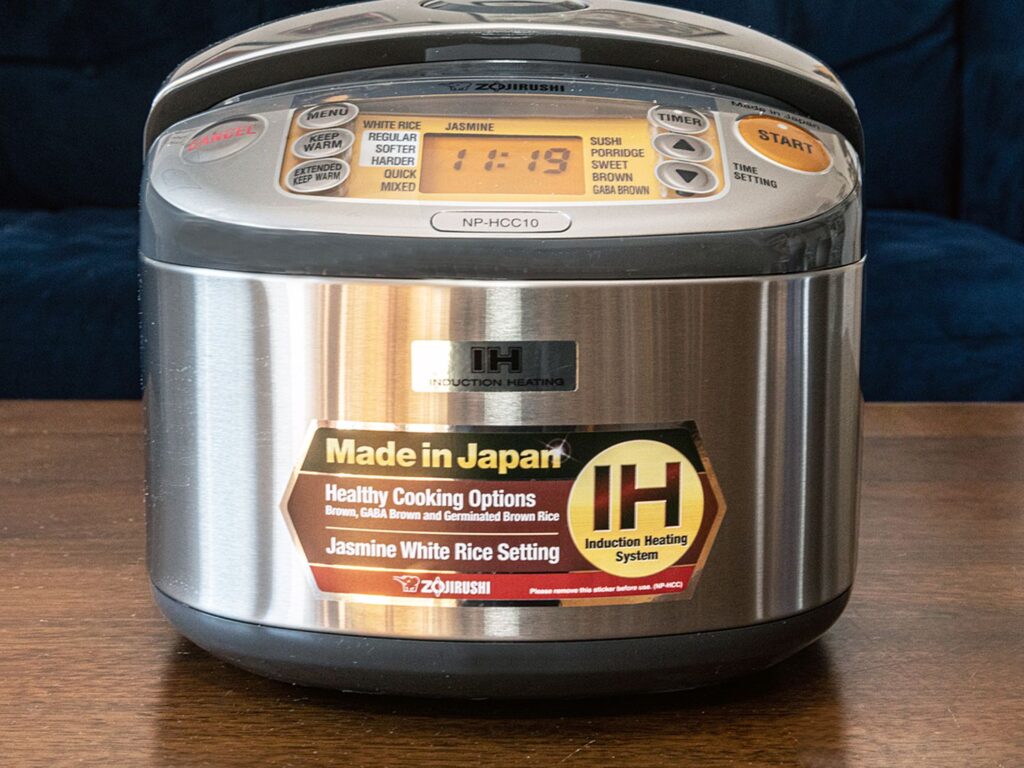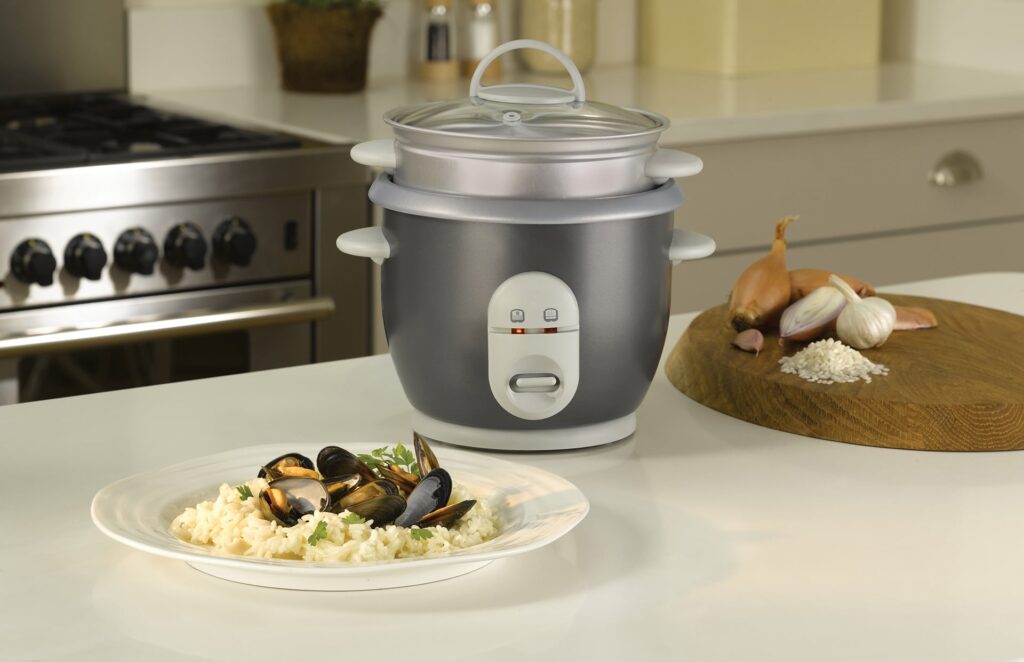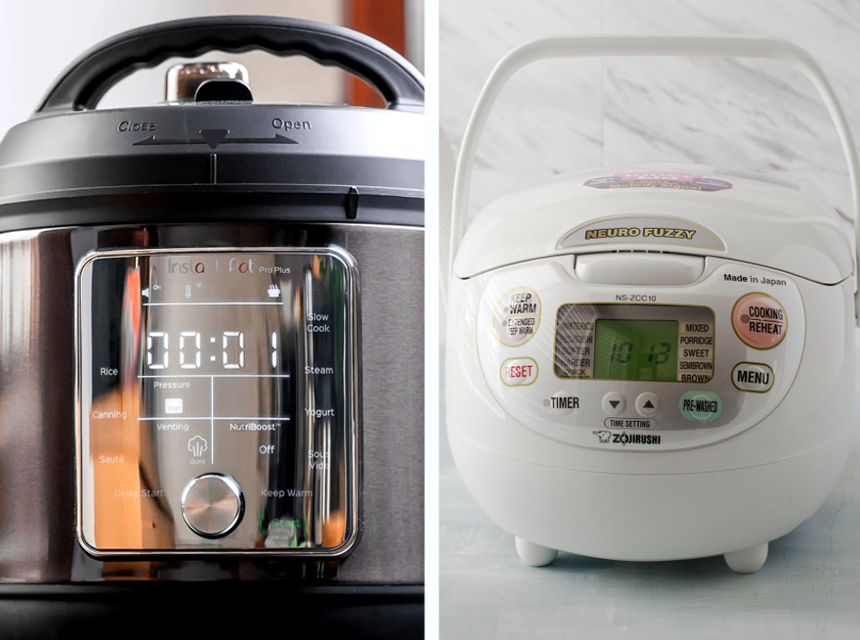Sticky rice is also known as glutinous rice or sweet rice or waxy rice. It is a staple food in Japan, China and Thailand, and a delicious treat when paired with curries, desserts, sauces, stir-fries, or savory dishes. Wondering how to make sticky rice in a rice cooker? This method of cooking is much more efficient and convenient than the traditional method.
First, you do not have to pre-soak it for many hours as you would when using a steamer. Secondly, it is a faster and hands-free method of cooking sticky rice because it only takes a few minutes and you do not have to monitor the cooker. Thirdly, the appliance will keep the sticky rice warm after cooking is complete so it is ready for serving for a few hours.
We have included tips for preparing sticky rice, the common mistakes to avoid and a quick and easy recipe that will help you master this method of cooking this sweet Asian rice.
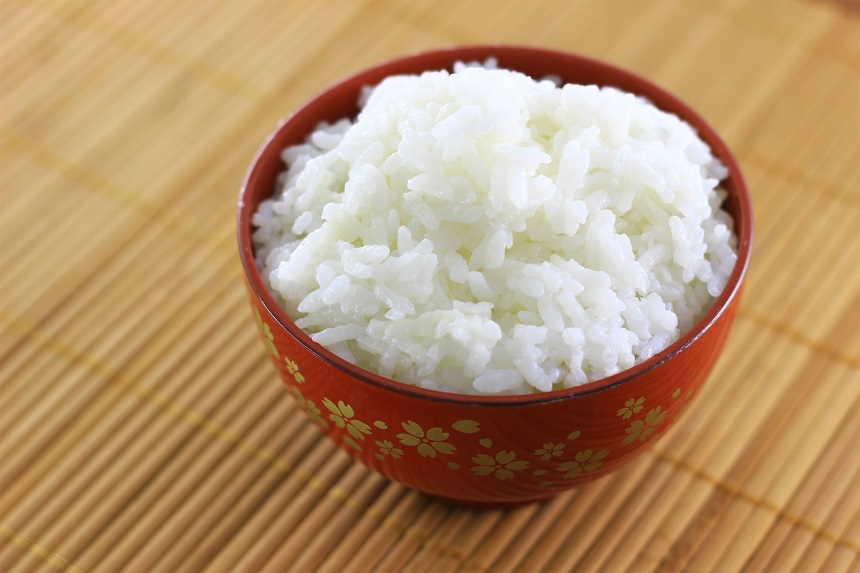
There are different varieties of rice such as jasmine rice, basmati rice, sushi rice, Arborio, and sticky rice. They differ in cooking qualities in chewiness, fragrance, hardness and stickiness, among other cooking qualities.
Rice grains have two starches, amylopectin and amylose, that determine the texture or consistency of cooked rice. The various types of rice vary in texture depending on the amount of each of the two starches.
The low amylose and high amount of amylopectin make short grain rice sticky and some medium grain rice such as Arborio, Italian and paella-style rice creamy because amylopectin gelatinizes and thickens the rice during cooking.
Long grain rice such as jasmine and basmati has low amylopectin and a high amount of amylose that results in separated rice with a fluffy and tender texture once cooked.
Sticky rice derives its name from its glossy, chewy and sticky texture that is due to the rice having very low amylose and the highest amount of amylopectin, among other varieties of rice. Cooked sticky rice should also clump together in a single mass without becoming mushy.
Sticky rice does not contain gluten. It is known as glutinous rice because of its glue-like texture after cooking. Non-glutinous rice grains contain high amounts of amylose. Once cooked, the rice is sweet and fluffy. Glutinous rice grains contain high amounts of amylopectin and the cooked rice is chewy and sticky with a sweet aftertaste.
Sticky rice is available in different types. The whole-grain purple or black sticky rice has a nutty scent and a dark purple color due to having intact bran. Other types of sticky rice include Thai long-grain rice with a floral aroma, the sweet and opaque-colored Japanese short-grain sticky rice that is a favorite for desserts, and the aromatic Southeast Asian sticky rice.
Sticky rice flavor largely depends on the level of refinement. For instance, white or polished rice has a subtle flavor whereas brown or whole-grain rice has a nuttier flavor.
Glutinous rice flour or sweet rice flour is from ground sweet rice. The flour is used to make Chinese sweet rice dumplings, Japanese mochi and Hawaiian butter mochi.
As we continue with our in-depth explanation of how to make Thai sticky rice in a rice cooker, here is a summary of tips that will provide the best results.
Measure by weight: Using cups and spoons when calibrating recipes can be unreliable because their accuracy depends on the ingredient you are measuring. Weight refers to the heaviness of an object whereas volume refers to the amount of space occupied by an object. That explains why a pound of feathers and a pound of lead weigh the same but have different volumes; the feathers have a larger volume because they are less dense than the lead. For this reason, we recommend using weight to measure the ingredients because it is more accurate and reliable. Professional recipes also prefer measuring by weight because lack of precision in the ratio of ingredients can make a considerable, and sometimes undesirable, difference in the outcome despite using the best rice cooker.
Rinse the rice: Wash the rice to remove any chemicals, dust, dirt, and bugs it might have picked during the manufacturing process or along the way to your home. The second reason you should wash it prior to making sticky white rice in your rice cooker is to remove excess starch. Otherwise, the cooked rice will be overly sticky. Rice comes in different sizes and varieties. To rinse white rice, put it in a mesh sieve or strainer and run it under cold water as you shake it gently. The time it will take to rinse the rice will depend on the amount of rice and it can take longer if you also rub or overly touch the rice with your fingers as you rinse it. You will know you have rinsed the rice when the water becomes clear. The process is the same for rinsing whole grain rice but you rinse it under cold water for much less time because it does not have excess starch. After rinsing the rice, drain it and transfer it to your cooking vessel to make sticky brown rice in a rice cooker.
Add water: Add water and then stir the rice to cook it uniformly.
Configure the settings: Check the manual for your rice cooker and use the recommended settings, including cooking time, to make sticky rice in Aroma or Zojirushi rice cookers in less than an hour.
Get rid of excess moisture: To get plump rice, you should remove excess moisture by fluffing up the rice with a fork or paddle and then allowing the rice to sit for about 2 minutes with the lid open.
These are the most common mistakes when making sticky rice or regular rice in a rice cooker. We will provide reasons to why they are mistakes and how you can correct them.
There are a number of food debates that might never end. One of the most common ones is whether you should wash rice before cooking it.
Rice absorbs more arsenic compared to other crops. According to Healthline, you can reduce the arsenic content of white and brown rice by up to 57% if you wash and cook it with clean, low-arsenic water.
Additionally, a research by the Food and Drug Administration indicates that washing rice strips away nutrients and minerals such as folate, niacin, iron and thiamine, and it has no significant impact on the arsenic content of cooked rice. However, the FDA also reports that cooking rice in excess water can reduce the inorganic arsenic content by 40 to 60 percent, depending on the type of rice.
Washing rice has its advantages. First, rinsing rice makes it clean because it gets rid of dirt, debris, chemicals, and small bugs. Bugs are the last thing you would expect to find in the Mango sticky rice in your rice cooker. Therefore, it is advisable to clean rice before cooking to remove unwanted and harmful ingredients.
Secondly, we remove excess starch by cleaning rice in a colander or mesh sieve under cold water while shaking it gently until the water becomes clear. Some people believe that washing rice also lends it the fluffy texture once cooked but expert studies show that it has little effect on the stickiness or hardness of cooked rice. This is good news for fans of sticky rice that might be worrying that washing rice before cooking will affect the sticky and chewy texture.
Avoid stirring rice during cooking because it breaks down the rice grains and releases natural starch that then produces an overly gloppy mush instead of the sticky jasmine rice you intended to make in your rice cooker. The additional starch that is released when you stir rice also creates a layer that causes the rice to burn or stick to the pan if you are using a steamer. The only time you might stir rice, and only once, to prevent clumps is when you add the rice to the water.
If you read user reviews of the best small rice cookers, you will realize that not everyone adds salt to the water. That is because a common belief is that it raises the temperature and makes the water boil faster, which slows down gelatinization that causes the rice to thicken. You could consider that an advantage if you want to reduce stickiness and keep the rice firm but not if you want to make sticky white rice in a rice cooker.
Another benefit of adding salt, as most professional chefs do, is to improve the flavor of sticky rice.
Heat, steam, pressure and flavor escape each time you remove the lid when cooking, regardless of the method you are using, and extends the cooking time. The only time you should lift the lid while making sticky rice in a Zojirushi rice cooker is to check the water or to add seasoning. Modern rice cookers from top brands come with reliable timers, thermostats and other computerized technology that will cook your meal properly, taking the guesswork out of the process.
The ratio of water and rice confuses many people because the amount of water required may vary slightly according to the variety of rice and the type of your rice cooker. If you do not use the right amount of water needed to make sticky rice or regular rice in a rice cooker, you will end up with dry and undercooked rice.
If you already have the best Japanese rice cooker, you can use the following recipe to make many sticky rice variations that will expand your palate.
After rinsing and draining the rice to get rid of excess starch and impurities, place your glutinous rice in the cooker.
Add the correct amount of water so that it is not fewer than three inches above the rice to allow the rice to expand once you soak it. Stir the rice to level it so it does not become clumpy.
The outer shell of sticky rice is hard and you need to soak the rice grains for two to four hours to soften the shell to get the sticky texture.
Soaking not only reduces cooking time by allowing the rice to start absorbing water but also improves the aroma of jasmine, basmati and other varieties of rice that have a fragrance.
Apart from that, HuffPost reports that soaking rice removes phytic acid that limits our bodies’ ability to absorb zinc, iron, magnesium, and calcium. Deficiency of these minerals can cause anemia, rickets and nervous disorders.
Add half a teaspoon of salt, stir the rice and then close the lid and turn on your rice cooker to make Chinese, Mango or Thai sticky rice.
Allow the sticky rice to sit for 5 minutes after the rice cooker shuts off and then fluff it up with a paddle. You are now ready to enjoy sticky white or brown rice prepared in a rice cooker.
A rice cooker is a versatile appliance that can also make sticky jasmine or brown rice. Although jasmine rice is not as sticky as sticky rice you can make it sticky by skipping the washing process so there is plenty of starch to act like glue when the rice is cooked.
Sticky white rice and stick brown rice made in a rice cooker can be bland if served plain. The good news is that there are several side dishes, including desserts, curries and duck stuffing, that you can eat with sticky rice to enhance the taste and balance the nutrients. They include steamed vegetables like carrot and broccoli, sticky rice dumplings, grilled pork or chicken, spicy coleslaw, shredded fried pork, the flavorful green papaya salad, and many more. You will find more side dishes on the SBS TV website that will blend well with sticky rice.
Sticky rice is a delicious and easy to make rice dish that is perfect for any occasion. It can be made in a rice cooker with just a few simple ingredients and takes only minutes to cook. Once you understand how to make sticky rice in rice cooker, you’ll never go back to the old way of cooking it.
